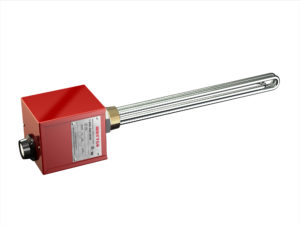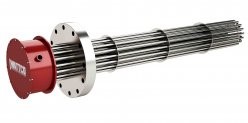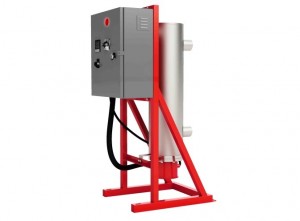Technical Synopsis of Electric Immersion Heaters
Last updated on January 19th, 2024 at 04:16 pm
 The type, design and technical specifications of electric heaters vary with the application requirements. Electric heaters are not only used to heat fluids, but they can also be used to heat and compress gases. This is the reason that electric heaters have become essential equipment for all industries.
The type, design and technical specifications of electric heaters vary with the application requirements. Electric heaters are not only used to heat fluids, but they can also be used to heat and compress gases. This is the reason that electric heaters have become essential equipment for all industries.
Though liquid and gaseous heaters are designed and operated in different ways, there are some heaters that can be used by every industry and immersion heaters are one of those. These are direct electric heaters with a thermostat and a heat generating element. These heaters also have temperature sensors for accurate heat control.
As the name implies, the heating element is directly immersed in the fluid to be heated. However, the immersion style and wattage ratings of the heater depend on the design and capacity of the heating tank. In this post you will learn the various types of immersion heaters and their technical specifications:
Screw Plug Immersion Heaters
 This is the basic type of immersion heater. Screw plug heaters are designed for small industries, where the fluids are heated in small-sized heating tanks. Usually, heating tanks used in small industries are open, but even if the tank is closed, these heaters can be installed in the walls of the heating tank.
This is the basic type of immersion heater. Screw plug heaters are designed for small industries, where the fluids are heated in small-sized heating tanks. Usually, heating tanks used in small industries are open, but even if the tank is closed, these heaters can be installed in the walls of the heating tank.
These heaters are preferred over traditional heaters because of their compact size and precise application. However, due to the wattage limitation, these heaters cannot be used to process viscous fluids. These heaters usually come with a built-in and self operated thermostat. You just have to immerse the heater in the tank and set the temperature.
Flanged Immersion Heaters
 Flanged heaters are used in the applications where the high temperature heating is required. These heaters typically require a nozzle for installation. As well, to remove the heater you need to drain the storage tank first. As far as the heating and application is concerned, flanged heaters are better and more reliable than screw plug heaters. Due to the design, it is difficult to install and uninstall the heater.
Flanged heaters are used in the applications where the high temperature heating is required. These heaters typically require a nozzle for installation. As well, to remove the heater you need to drain the storage tank first. As far as the heating and application is concerned, flanged heaters are better and more reliable than screw plug heaters. Due to the design, it is difficult to install and uninstall the heater.
The best thing about flanged heaters is that they are not hefty at all. They occupy a small space, but have a large heating element which is perfect for applications which require high wattage heating. Just like screw plug heaters, these heaters also have a self-operated thermostat and temperature sensors.
Circulation Immersion Heaters
 These heaters are also used in direct heating. The only difference between circulation and immersion heaters is the heating element in circulation heaters keeps on circulating, which makes them perfect for heating viscous and heavy fluids. Usually circulation heaters are preferred over immersion heaters in large-scale applications because they are easier to install. They don’t require any nozzle or additional tank for storage.
These heaters are also used in direct heating. The only difference between circulation and immersion heaters is the heating element in circulation heaters keeps on circulating, which makes them perfect for heating viscous and heavy fluids. Usually circulation heaters are preferred over immersion heaters in large-scale applications because they are easier to install. They don’t require any nozzle or additional tank for storage.
You can directly install them into the heating tank which makes them the most efficient and accurate of all heaters. The heat generated by the heating element is directly and immediately absorbed into the fluid. Plus, due to circulating heating element, heat penetration is also very uniform, regardless of the viscosity and nature of fluid.
